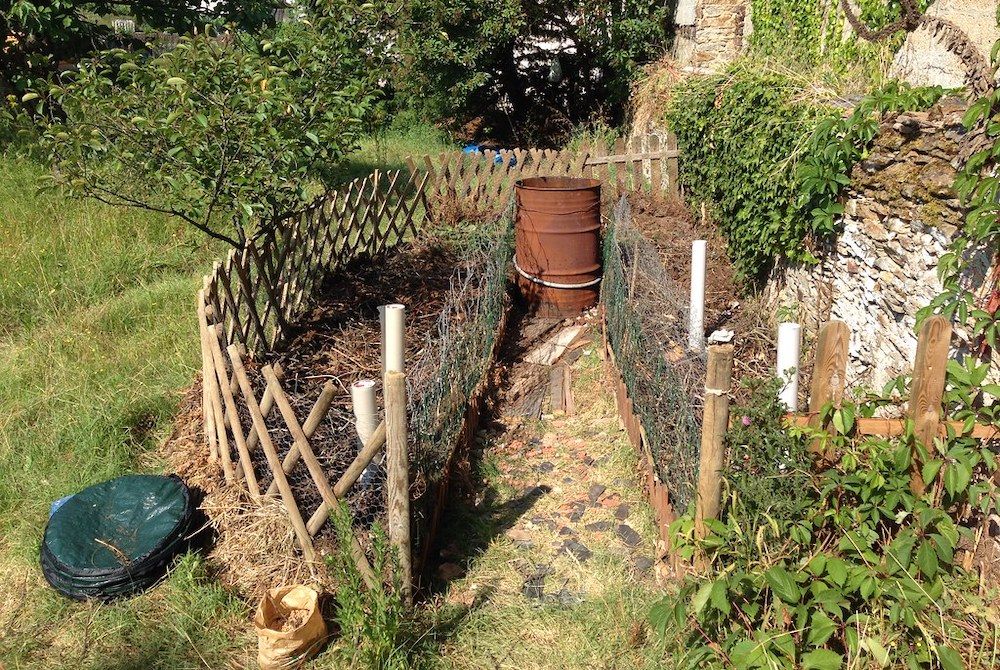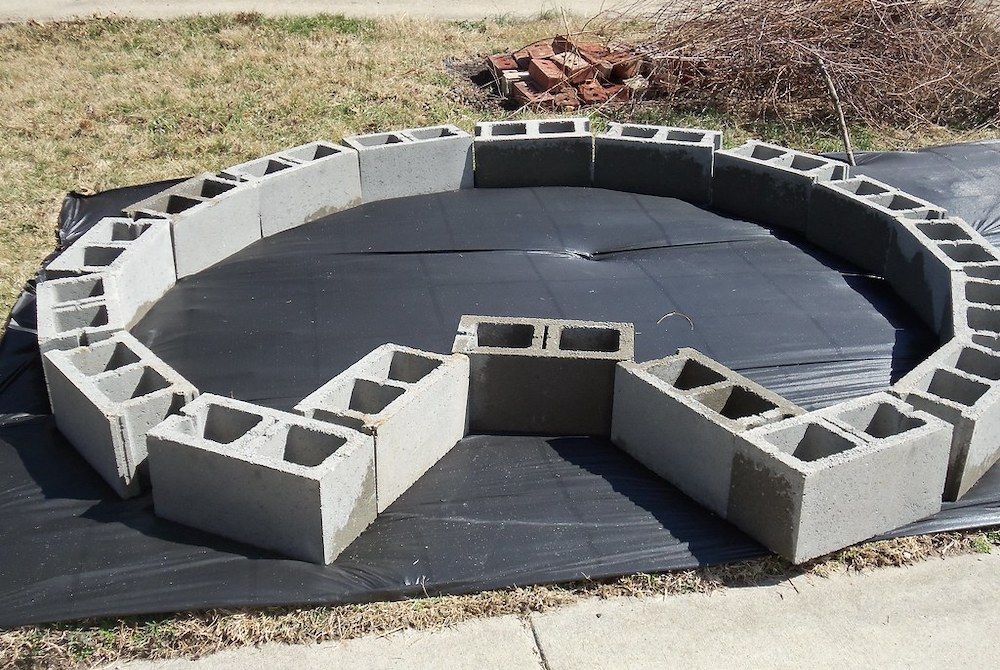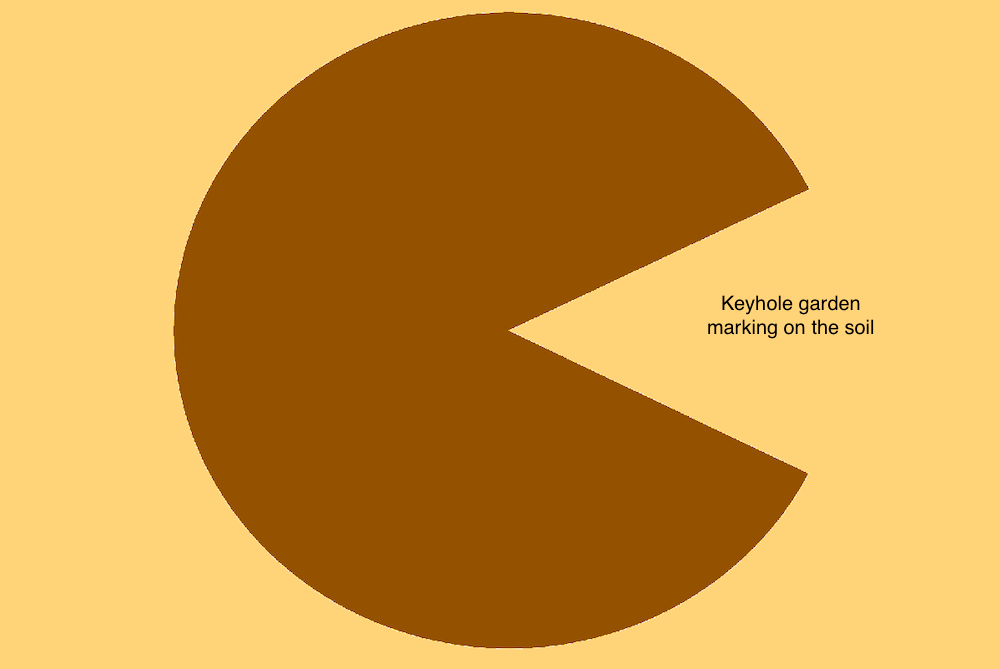A keyhole garden is a fantastic way to grow your favorite crops, save your knees and back, and compost simultaneously! Unlike a traditional raised bed garden, a keyhole garden looks like a pie with a slice taken out. Essentially, a keyhole garden is built around a composting basket that you can use to make your own compost. The mid-point cutout helps you access the compost basket and the raised bed without walking across your flowers and crops.
The keyhole garden’s shape isn’t the only reason it’s so popular, it has many benefits. Elevate your gardening skills and explore the benefits by creating your own with just a few simple steps.
Benefits of a Raised Bed Keyhole Garden
Image credits: katcan51 via Creative Commons
A raised bed keyhole garden is an excellent alternative to traditional raised bed gardens. They're easy to fit in any space and are a practical solution for awkward backyard layouts. If you're used to making your own compost, a keyhole garden will save you frequent trips between your compost bin and your raised bed garden.
This is because a keyhole garden is built around a composting basket that provides nutrients to your plants as it decomposes. Apart from being able to fit in tight spaces and awkward backyard layouts, keyhole gardening can:
- Help you overcome gardening obstacles such as flooding, drought, and physical limitations,
- Increase productivity by allowing you to access corners and mid-points of the raised bed without much effort.
- In-built composting bin feeds your plants on an ongoing basis, leading to healthy crops.
- Help you maintain and tend to your garden without bending too much.
- Keep pests, rodents, and other small mammals away from your crops.
- Be the perfect solution to uneven grounds.
How to Create a Raised Bed Keyhole Garden
If you're inspired, here's a step-by-step on how to create your own raised bed keyhole garden.
You can use bricks, stones, galvanized steel, cinder blocks, untreated wood, and pallets to DIY your own keyhole garden. If DIYing isn't an option, you can consider buying a kit online that you can set up using the instructions that come along with the kit.
Although many keyhole gardens are circular, you can build one that's square or even rectangular, depending on the available space in your garden. Just ensure you have a pathway to the center compost.
Step 1: Pick a Location, Level and Mark It
Image Credit: Lakeisha Ethans for Backyard Boss
Pick a spot where your keyhole garden bed receives at least six hours of direct sunlight, partial shade, and good air circulation. Also, ensure the raised bed is close to a water source. If it isn't, it would be difficult to control water output when you're watering your plants, especially if the water source is far from the raised bed. Faster and easier water source access will also keep you motivated.
After picking your location, level it as much as possible and mark it out. Marking helps you prepare and understand how big you want your keyhole garden to be. It acts as a road map to help you lay your foundation.
Regarding the size, most keyhole gardens are between 4 and 6 feet wide. Although, you can alter these measurement depending on the available space you have in your backyard.
Step 2: Create the Composting Bin
Image Credit: Lakeisha Ethans for Backyard Boss
In the center of the opening, you'll place your composting bin made from wire mesh or chicken wire. Ensure the composting bin is at least a foot higher than the retaining wall and a foot deeper than the base of the keyhole garden.
This will help enrich soils at all depths of the raised bed. In the image above, the composting bin is a cylinder, but you can make square-shaped ones too.
Step 3: Build the Retaining Wall
Image Credit: Lakeisha Ethans for Backyard Boss
When building retaining walls, there are some materials you should never use, like railroad ties, treated wood, or styrofoam. Galvanized steel, bricks, and untreated wood are good raised garden bed materials for building your keyhole garden.
Your keyhole garden can be anywhere from 12 inches to 4 feet in height. Ideally, the height will depend on the height the primary gardener feels comfortable working with. It should be comfortably high and easy to sit upon, so the gardener doesn't have to bend too much to maintain, weed, water, or plant crops.
From the image above, you can see how easy it is to access the composting basket while tending to your plants.
Step 4: Layer Your Keyhole Garden
Image Credit: Lakeisha Ethans for Backyard Boss
Before you add soil, layer your keyhole raised bed with twigs, pottery shards, and rocks or gravel to aid drainage. Then add a layer of leaves, old newspaper, wood ash, and grass clippings. This will create a sturdy base for your garden, similar to the process of lasagna gardening.
Ensure you don't add anything inorganic, synthetic, or other materials that won't decompose, like rubber, plastic, glass, and batteries.
Step 5: Add Compost and Topsoil
Image Credit: Lakeisha Ethans for Backyard Boss
After layering with browns and greens (twigs, grass leaves, newspaper), add well-draining soil to your keyhole garden. You can make your own organic soil for your garden if you choose or head to the nursery and buy some. Test your soil's pH and ensure it's between 6.0 and 6.8 for healthy plant growth.
Layer the soil so it slopes away from the center composting bin towards the edge of the retaining wall. This will help retain water and reduce the need for frequent watering. Now add organic matter like paper, grass clippings, kitchen scraps, and fallen leaves to the compost bin in the center and soak it with water.
You can add a layer of topsoil to your compost to help speed up the decomposition process, improve your compost's texture, and reduce odor.
Step 6: Plant Your Keyhole Garden
Image Credit: Lakeisha Ethans for Backyard Boss
Now it's time to choose the right plants based on your USDA planting zone, sun exposure, and soil requirements. Your climatic conditions will significantly affect the kind of plants you choose to grow.
For example, pepper and tomato plants are sensitive to frost, so if you grow them in your keyhole garden, you'll need to move them indoors during winter. Also, keep your plant's light requirements in mind when selecting plants for your garden. Finally, understand their soil requirements and the ideal pH to help them thrive.
Tips to Remember
Image credits: Top Photo Corporation via Shutterstock
While you watch your garden flourish, there are a few tips to keep in mind to make the most of your keyhole garden:
- When you water your garden, spend a little time watering the raised bed and water mostly through the compost bin to spread compost "juice" for your plants to absorb.
- Add a layer of shredded paper or topsoil to eliminate the odor when you add kitchen scraps or garden debris to your compost bin. This will also keep small mammals and rodents away from your compost pile.
- When planting, place tall sun-loving plants on the west side of your keyhole garden, so they don't cast a shade over other smaller plants.
- Add mulch to retain moisture and prevent soil erosion.
- When it's too hot or too rainy, place a cover over your raised garden bed by erecting an arching framework over your garden to keep your plants cool and prevent overwatering. Remember to cover your compost bin with a weather-proof plastic sheet to prevent evaporation.
- Keep an eye on the retaining wall and fix it as and when required to prevent damage to your keyhole garden.
- Add soil to your garden as and when required.
Grow Get ‘Em!
A keyhole garden raised bed is a fantastic way to grow your own food and compost, all without stressing your back and knees. Keyhole gardens are great for awkward backyard layouts and small spaces and for gardeners who make their own compost. This layout will also encourage those who don't make compost to start piling!
Leave your experiences, thoughts, and questions in the comment section! And share with friends and family who might find this helpful.
Happy gardening!







